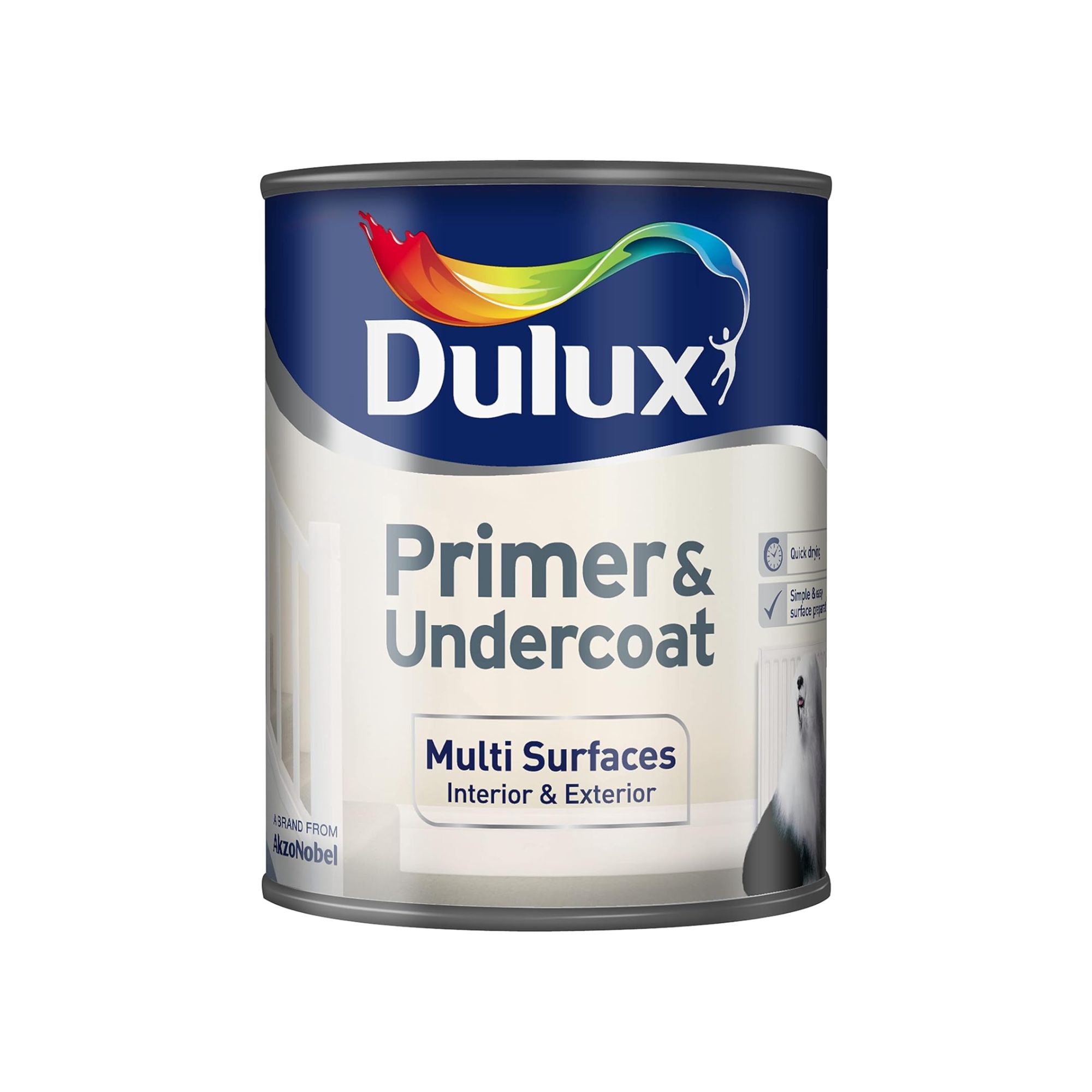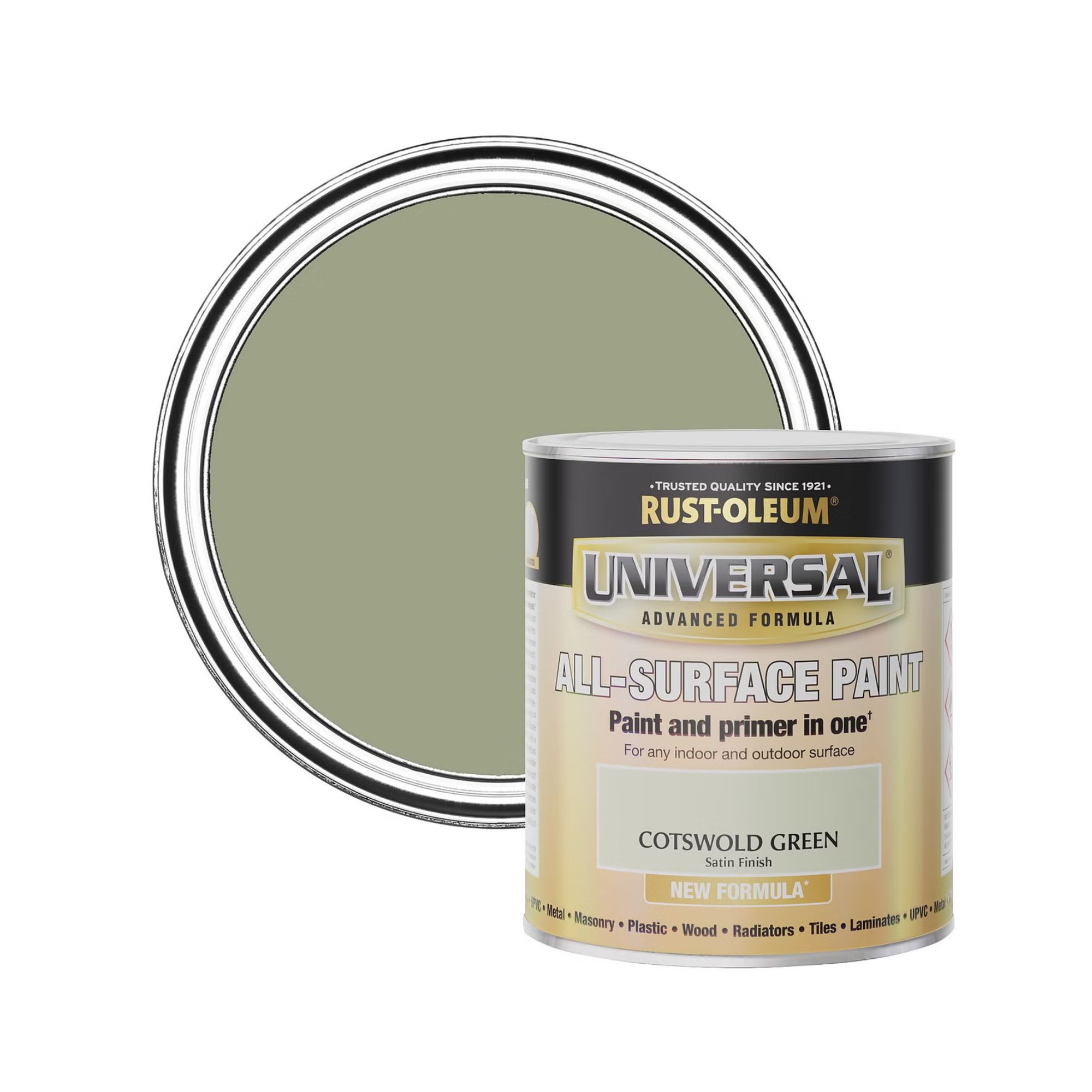Can you paint paving slabs? Yes, but only if you follow these expert tips
You can do it… but you need to do it right

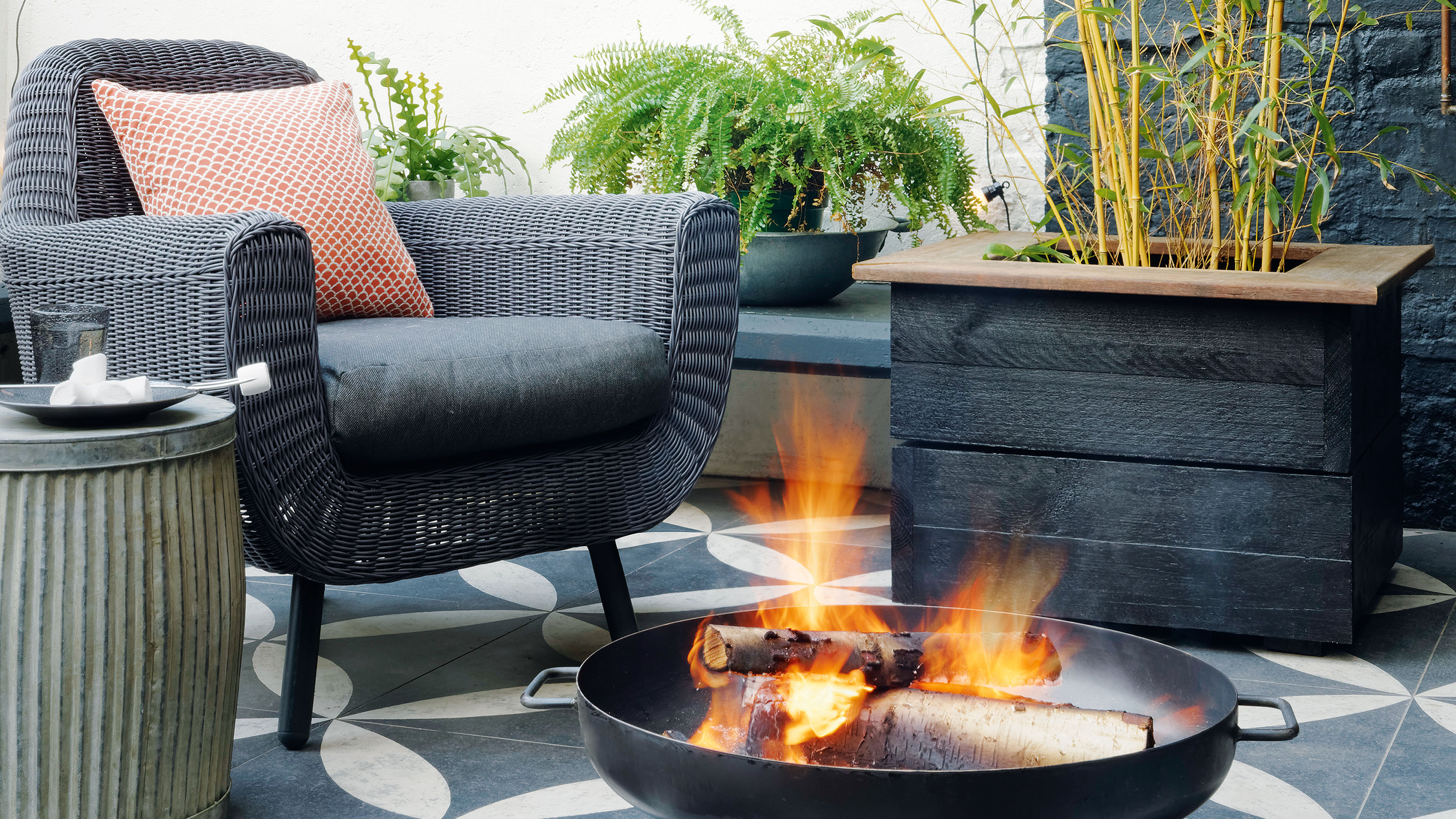
If you’re bored of grey, dirty, and grimy paving slabs, you might wonder: Can you paint paving slabs? The good news is that you can, but there are some caveats you should consider before digging out your paintbrushes.
Whether you’re looking to switch up your patio ideas or take your garden path ideas up a notch, you might already know how easy it is to find bright and bold paving slabs online. But if you want to transform your garden on a budget, buying brand-new tiles probably isn’t on your radar. Thankfully, a few tins of paint and a stencil are affordable alternatives.
By painting your paving slabs yourself, you can give your outside space the much-needed attention it needs while also sticking to a strict budget. And while experts do recommend this DIY idea, you have to do it properly for it to be a success.
Can you paint paving slabs?
‘Paving slabs can be painted to instantly update and refresh the surface of your patio,’ explains Tom Clifford, garden landscaping expert at Gardenstone.
More than anything, it can help to bring together your garden furniture, your plants and greenery, and the overall theme of your garden. And if you don’t have one, it can even help you get started.
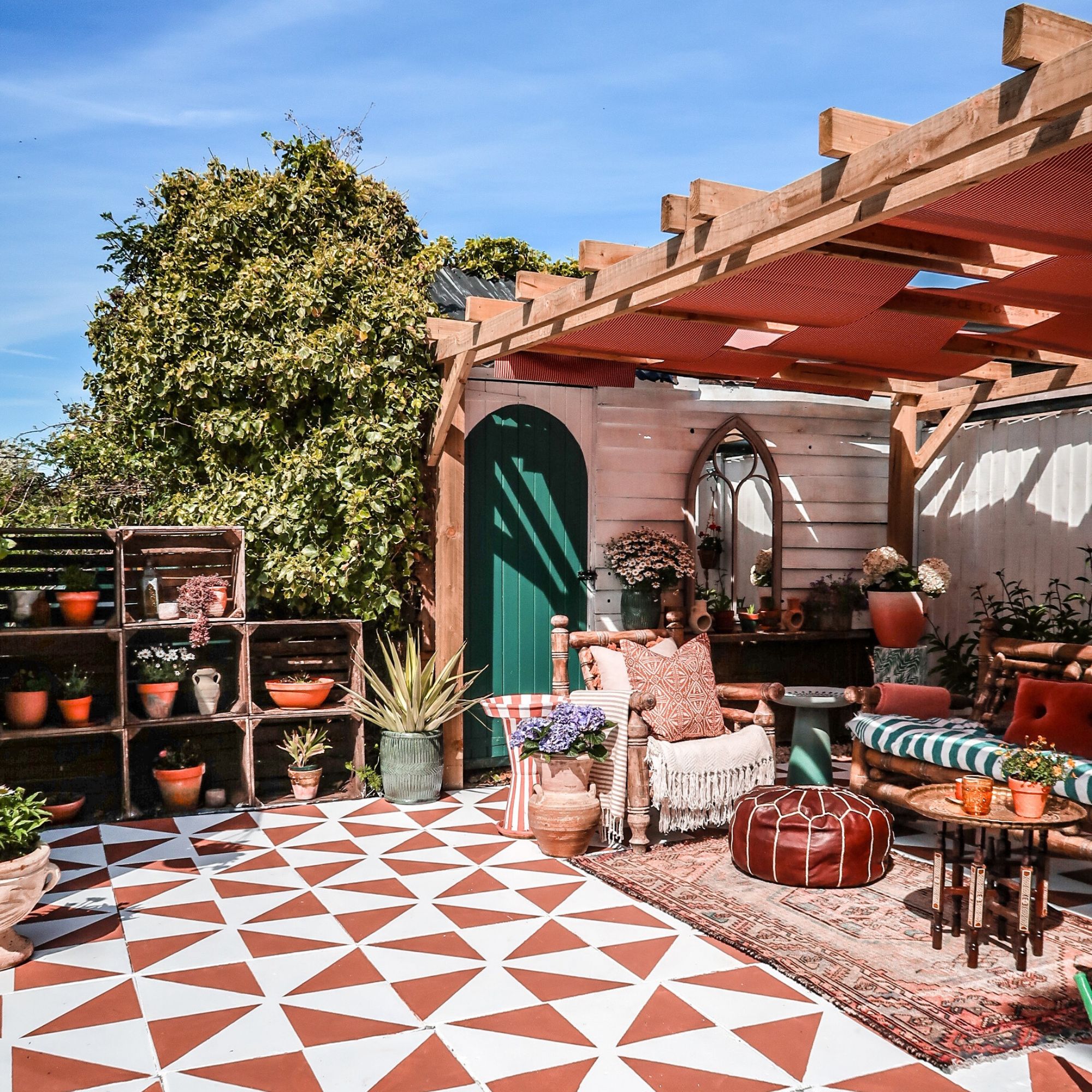
Tom says, ‘Painting your paving slabs allows you to incorporate a unique colour that you can’t achieve with a regular patio. Plus, if you get bored with the colour or finish of your patio, then you can easily repaint it using an alternative colour.’
However, Tom has also issued a warning to those who want to add this project to their to-do list, as painting paving slabs can be difficult.
Sign up to our newsletter for style inspiration, real homes, project and garden advice and shopping know-how
‘It is important to bear in mind that painting paving slabs isn’t a long-term solution. Although it will offer an instant refresh, the paint can easily start to chip and appear worn. Paint can get scratched and scuffed when moving furniture, damaged through weathering and worn down in areas of high traffic.’
But in the long run, painting will still be cheaper than buying a whole new patio or garden path.
This is something that interior blogger and designer, Hayley Stuart, has discovered for herself. Although she considered buying new tiles for her patio, she chose to paint her old ones instead. The result looks extremely expensive and chic. But thankfully, it only looks expensive.
When we asked why she chose to DIY this project rather than buy brand-new tiles, she said, ‘It was much more cost-effective to paint. Buying new large-format tiles for a large space would have cost a lot. I have absolutely no regrets, and I love how it turned out.’
What you'll need
Top tips for painting paving slabs
Although it’s certainly possible to paint paving slabs, doing so incorrectly could see the paint lifting or fading earlier than you’d like. So, it’s important that you follow these top tips for painting paving slabs:
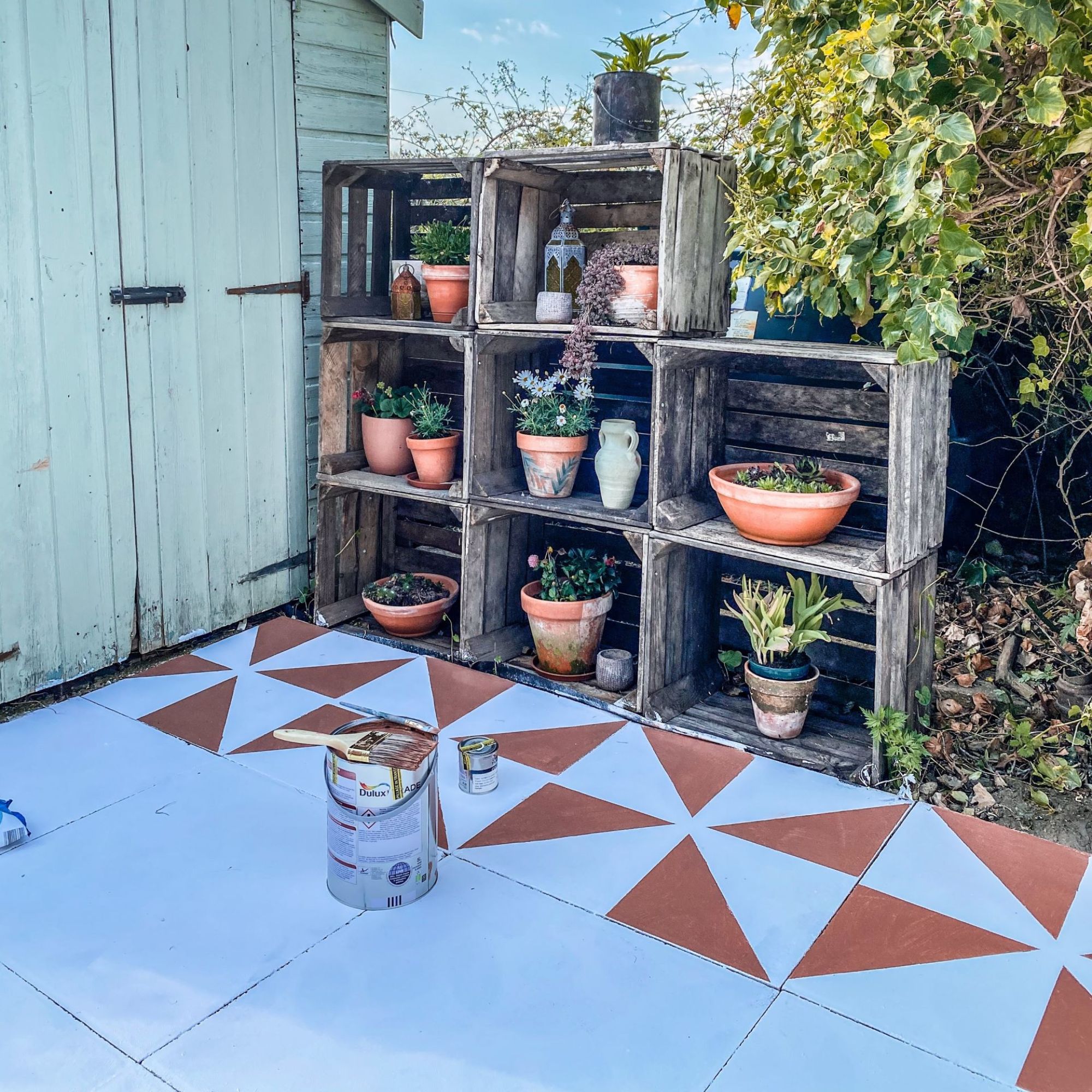
1. Always clean your paving slabs before painting
Before you start painting your patio slabs, you must clean them first. This will help to remove any dirt or algae on the surface and give you a clean slate (or should we say slab?) to paint. If you don’t do this, the paint may not stick to the slabs and it won't look as effective.
Thankfully, our guide on how to clean paving slabs has got you covered, and you might also be interested to know that you can clean a patio with washing powder, too.
2. Paint a test slab first
Painting paving slabs can completely transform your outside space, but it can also overwhelm it - especially if you have a small patio. Because of this, you might want to consider painting a test slab first.
This way, you can double-check that you’re happy with the design and the colour before it’s too late to change your mind.
3. Use a primer and masonry paint
As paving slabs are rough and tough, you need to make sure that you choose a paint that’s going to stick to them. This is something Hayley didn’t do the first time she painted her patio, but she made sure to prime her tiles the second time around.
She said, ‘I would recommend that people always prime using a primer suitable for outside and a good quality masonry paint and be prepared for maintenance every few years.’
Even if you buy masonry paint that’s both a paint and a primer in one, it’s still a good idea to prime it first. Just remember to do this on a dry and sunny day so it dries as quickly as possible, and aim for one coat of primer and two coats of masonry paint for a thick and durable finish.
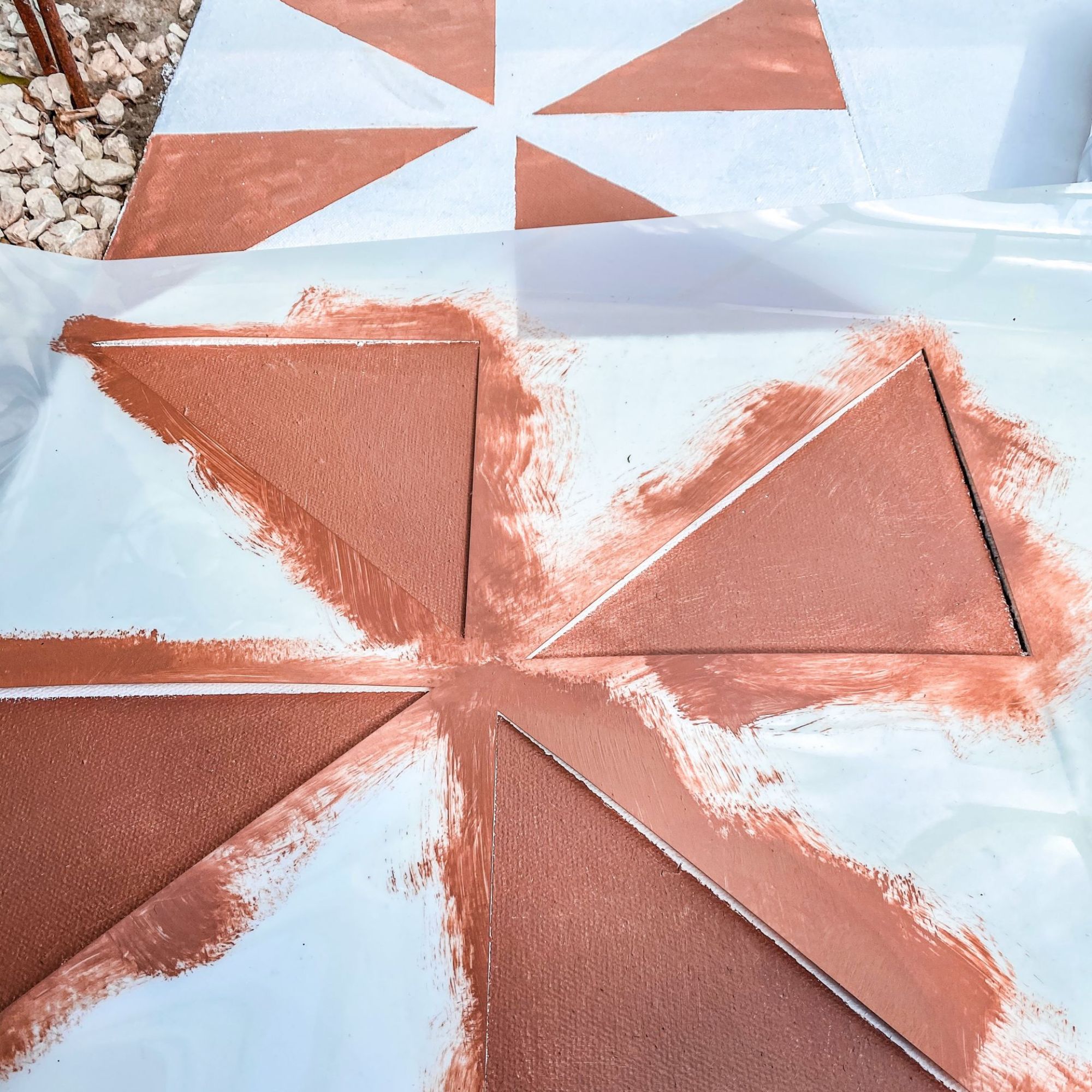
4. Choose the right paintbrush
To paint paving slabs, you could either use a small roller brush or a normal paintbrush. Which one you choose ultimately depends on the type of paving slabs you have and the stencil you choose. In some cases, you may need to use both.
For example, a roller brush will work well for those with a large stencil design and smooth paving slabs. But if you have a design with a lot of small details and a very textured surface, you should use a smaller handheld brush to get into the nooks and crannies.
5. Seal with a patio sealer
Although this step is optional, we’d always suggest sealing with a patio sealer - like this Sika Natural Patio sealer from B&Q - when you’ve painted your paving slabs.
These sealers will protect the paint and the paving slabs as a whole, maintaining the integrity of the design while also keeping the paving slabs relatively free from weeds, dirt, and grime. It can also help to protect the painted paving slabs from the effects of the sunlight.
6. Be prepared to re-paint
As Hayley states, you need to be prepared to maintain and re-paint your painted paving slabs occasionally. This DIY method isn’t indestructible, especially when your painted paving slabs are subject to the wet and grim British weather.
To keep your painted paving slabs in good condition, keep on top of cleaning and keep your stencil and spare paint to hand to top up every now and then. If you keep to the same stencil design, you should be able to keep things neat and tidy.
FAQs
Is it worth painting patio slabs?
Yes! Painting patio slabs is a great way to add some colour or pattern to a patio or just refresh it after a long and wet winter. It’s also an incredibly affordable option for those who don’t have the money to replace their paving slabs.
As if that wasn’t enough, it’s very easy to paint patio slabs. You just need to make sure that you do it properly to ensure it can withstand the British weather. Just be prepared to refresh the paint every few years or so.
What paint is best for paving slabs?
Although you can buy paint that’s specifically designed for concrete floors, any type of masonry paint can be used to paint paving slabs. However, you should always prime your paving slabs before painting them - even if the paint you choose is both a paint and a primer in one.
Will you be painting your paving slabs this spring?

Lauren Bradbury has been the Content Editor for the House Manual section since January 2025 but worked with the team as a freelancer for a year and a half before that. She graduated with a Bachelor’s degree in English and Creative Writing from the University of Chichester in 2016. Then, she dipped her toe into the world of content writing, primarily focusing on home content. After years of agency work, she decided to take the plunge and become a full-time freelancer for online publications, including Real Homes and Ideal Home, before taking on this permanent role. Now, she spends her days searching for the best decluttering and cleaning hacks and creating handy how-to guides for homeowners and renters alike, as well as testing vacuums as part of her role as the Ideal Home Certified Expert in Training on Vacuums, having spent over 110 hours testing different vacuum models to date!
